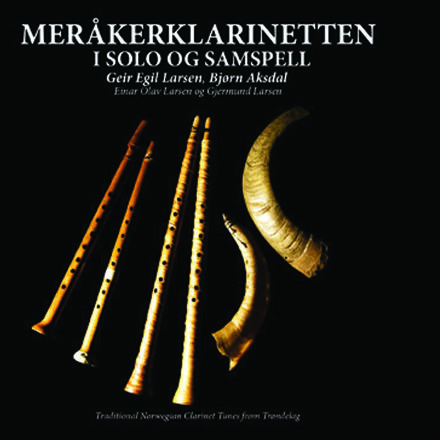The tradition of both making the instrument and playing it has been brought up to date by Harald Gilland (1912-1992), a local industrial worker and a fiddler. When he was a child, Gilland received a clarinet from his father, who also told him that such instruments were in use by shepherd boys as late as the 1880s. The Meråker clarinet, as it is now called, went out of use early in this century. In the 1950s, Harald Gilland and some of his colleagues caused a revival of the instrument by making a modernized version of it. Over the next years, Gilland developed the clarinet even more, but he still maintained its archaic type of scale.
Originally a solo instrument, the Meråker clarinet could now also be used in ensemble playing. Around 1980, people outside Meråker became aware of this instrument through a very popular television program, which featured Gilland and his clarinet. Soon after, recordings of the instrument were also to be heard in the different folk music radio programmes. In the 1980s, quite a lot of Meråker clarinets were distributed by Gilland throughout Norway and even abroad. In Trondheim, Ringve Museum now took such an interest in the instrument that it started to sell Gilland’s clarinets to its visitors, and a music cassette was made to present the sound, playing style and repertoire of the instrument.
Around 1990, an instrument strongly reminding of the old Meråker clarinets, was found in a museum in Elverum in Østerdalen. The instrument was soon named the Østerdal clarinet, as an equivalent to the name Meråker clarinet. The instrument maker Magnar Storbækken from Tolga started to make good playing copies of the instrument, which he sold to musicians. After Harald Gilland died in 1992, a few craftsmen who had learnt from him still made some clarinets during the next years. Additionally, Magnar Storbækken developed a special variant of the instrument. However, the production of Meråker clarinets was very limited, and the public interest for the instrument decreased strongly during the 1990s.
Today, the situation for the Meråker clarinet is far from positive, and only a handful of musicians keep the tradition alive. It is even difficult to find new good instruments, and there are no recordings available presenting the sound and the repertoire of the Meråker clarinet. Geir Egil Larsen and I have both learnt the tradition of playing the Meråker clarinet directly from Harald Gilland. We think that this traditional instrument contains many musical qualities which should be passed on to new generations of folk musicians. Therefore, we decided to make this CD to promote the public interest in the Meråker clarinet, as well as honouring the memory of our teacher, Harald Gilland.
By Bjørn Aksdal


